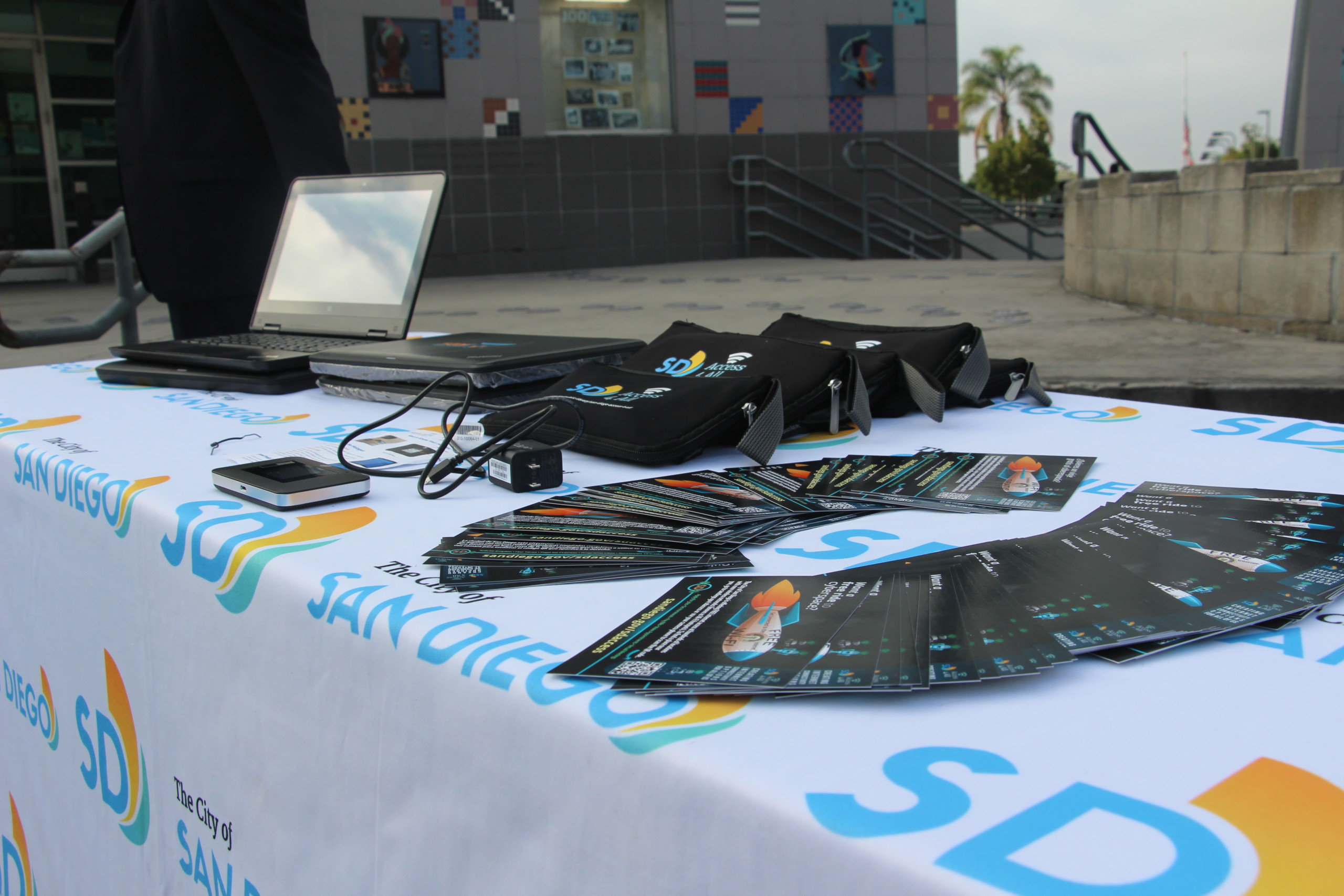‘SD Access 4 All’ program offers free Wi-Fi at over 300 new locations plus hundreds of new laptops and mobile hotspots to check out from libraries
Following through on his promise to take action to close the digital divide that leaves 53,000 San Diego households with no internet access, San Diego Mayor Todd Gloria today launched a major expansion of the “SD Access 4 All” program with free Wi-Fi at over 300 new locations.
Through the program, the City also purchased hundreds of new laptops and 900 new mobile hotspots that patrons can check out from select libraries. Mobile hotspots are easy-to-use and allow users to connect their laptop, tablet or other web-enabled devices to the internet.
“This major expansion of free Wi-Fi across our city is about equity and ensuring every San Diegan has a chance to succeed,” Mayor Gloria said. “Far too many San Diegans have been held back because they have no internet access. . This is a first step toward righting that wrong by providing free Wi-Fi at hundreds of locations as well as providing new tools at libraries – from laptops to mobile hotspots – to help residents get connected.”
The announcement comes as Mayor Gloria’s proposed Fiscal Year 2022 budget aims to increase access to technology and the Internet to expand library program usage and help San Diegans compete for 21st century jobs.
The City created a new website for “SD Access 4 All” that provides details on all the program’s offerings, including an interactive map that San Diegans can use to find a free Wi-Fi location nearby. Locations include libraries, parks, recreation centers and other neighborhood spots. The Wi-Fi works outdoors at every location so there’s no need to enter any facility to access.
“The past year under the pandemic has made clear how vital internet access is in our modern world,” said City Councilmember Sean Elo-Rivera. “Families struggled with online learning and many San Diegans were forced to work remotely. Now imagine being one of the 53,000 San Diego households trying to do that without basic internet service. We can do better, and this Wi-Fi expansion is just the beginning of our push for digital equity for all San Diegans.”
With digital equity a top priority, the City Council funded this expansion by allocating $500,000 in the current fiscal year budget for a new digital equity program. With that funding, the “SD Access 4 All” program has provided:
- Free Wi-Fi at over 300 locations, including dozens of libraries and Parks and Recreation facilities and 255 street locations.
- Outdoor community labs with free Wi-Fi, tables and chairs at 10 libraries.
- Hundreds of new laptops to check out from libraries for up to two hours at a time.
- 900 new mobile hotspots that patrons can check out for up to 30 days from select libraries.
“We’re excited to offer free Wi-Fi at our libraries, and now we have hundreds of new devices to help our patrons get connected, “ said Misty Jones, the City’s Library Director. “The newest option we have is for San Diegans to check out a mobile hotspot that they can use to get free Wi-Fi at home or wherever they can get a cell signal.”
The “SD Access 4 All” program benefited from several community partners to provide this public service. The San Diego Parks Foundation helped support free Wi-Fi at two dozen park locations while the San Diego Public Library Foundation supported the Library’s outdoor community computer labs and laptop expansion.
In addition, the City reached an agreement with Cox Communications on the 255 neighborhood Wi-Fi hotspots and with AT&T on the mobile hotspots with both companies providing discounts on each service.
“Keeping all residents of our community connected is a top priority for Cox, and we’re proud to support Mayor Gloria’s efforts to bring additional access opportunities to all San Diegans,” said Sam Attisha, Senior Vice President and Region Manager for Cox Communications. “Working with the City of San Diego to further expand Wi-Fi hotspot locations to residents, especially in disadvantaged neighborhoods like the Promise Zone, will help bridge the digital divide.”





